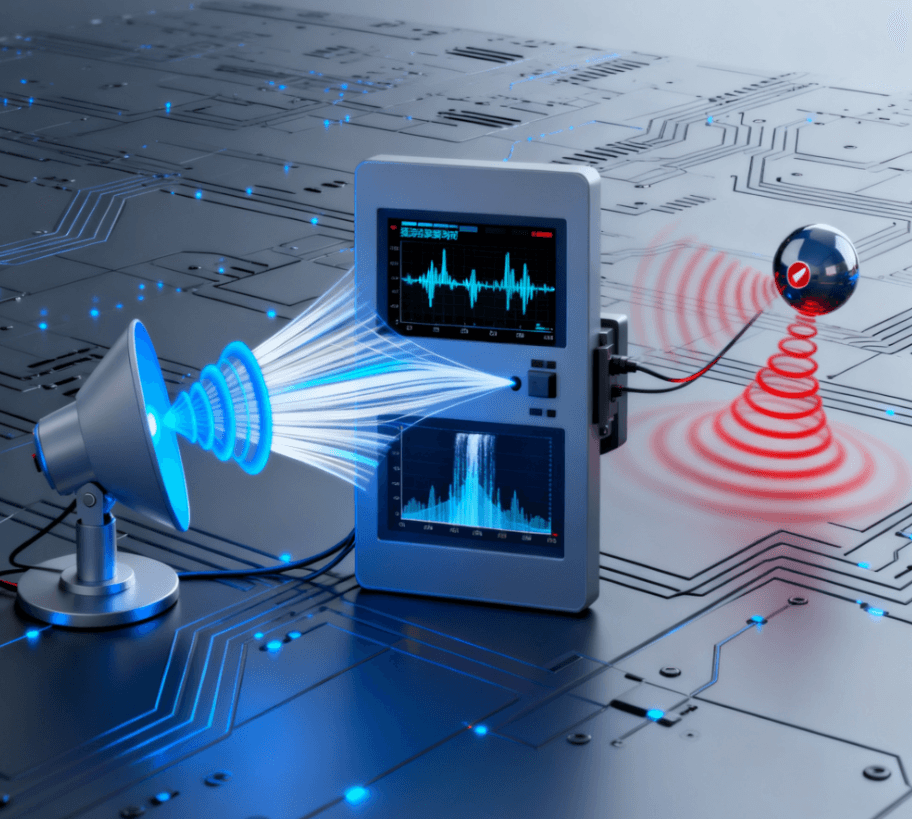When people think about radar, they usually imagine a system that tracks aircraft, vehicles, or weather patterns. Yet, advances in millimeter-wave (mmWave) radar technology are pushing this concept much further. Recent research has shown that a radar operating in the millimeter-wave frequency band can detect micro-vibrations—even those generated by human speech (IEEE Spectrum, 2020).
At Linpowave, we have observed growing interest in using radar not only for distance or motion detection but also for extremely subtle mechanical movements. This capability opens new possibilities in smart sensing, health monitoring, and even contact-free voice interfaces. However, it also raises important questions about signal reliability, privacy, and regulation (Nature, 2018).
Understanding Millimeter-Wave Radar
Millimeter-wave radar operates typically between 30 GHz and 300 GHz. Compared with conventional microwave or ultrasonic sensors, it offers shorter wavelengths and higher spatial resolution. These characteristics enable the detection of very small displacement changes on a target’s surface (NI White Paper on mmWave Radar).
When an object vibrates—for example, due to sound waves from speech—those minute surface movements can cause slight variations in the reflected radar signal phase. By analyzing these phase modulations, a mmWave radar system can estimate the vibration pattern. Under controlled conditions, these patterns may correspond to audio frequencies, allowing the system to reconstruct sound-related information without a traditional microphone.
This principle is similar to well-known optical or laser-based vibration sensors, but radar has a unique advantage: it works in the dark, through certain materials, and without direct line-of-sight contact in some cases (Science Advances, 2019).
How Vibrations Become Voice-Level Signals
To sense vibrations related to human speech, a radar must detect displacement amplitudes as small as a few micrometers or less. This requires a high signal-to-noise ratio (SNR) and a stable detection environment. Researchers often use frequency-modulated continuous-wave (FMCW) radar architectures because they provide both range and phase information with fine resolution (Texas Instruments FMCW Radar Overview).
However, the process is far from simple. The reflected signal from a vibrating surface is usually mixed with multiple echoes and environmental clutter. Even a small body movement, air turbulence, or wall reflection can mask the vibration signal. Therefore, extracting voice-level data requires advanced signal-processing algorithms—often involving phase unwrapping, filtering, and machine-learning-based reconstruction (MIT Technology Review on Signal Processing).
While laboratory demonstrations have shown promising results, real-world deployment still faces technical challenges, such as:
-
Maintaining stable reflection over varying distances and angles;
-
Mitigating multipath interference in enclosed environments;
-
Achieving consistent phase accuracy across temperature or motion changes.
Potential Applications Beyond Audio
The ability to detect micro-vibrations can extend far beyond voice reconstruction. In industrial environments, mmWave sensors can monitor machinery vibrations to identify mechanical faults without physical contact (IEEE Transactions on Industrial Electronics). In healthcare, similar principles can be applied to monitor respiration or cardiac motion from a distance.
For smart homes, researchers have explored radar-based voice interfaces that recognize gestures or vibrations caused by speech, offering an alternative when microphones are not ideal due to privacy or acoustic limitations (Linpowave Smart Home Radar Blog). Another potential use case lies in non-intrusive surveillance — detecting presence or movement behind thin walls or glass partitions — although such applications must comply with regional privacy regulations.
Linpowave’s radar products, for instance, are designed for environmental sensing, human presence detection, and motion analysis. Although our current product lines are not aimed at audio reconstruction, the same hardware principles support a variety of high-precision vibration measurements.
Privacy and Regulatory Considerations
Whenever a sensing technology gains the capability to interpret information related to human behavior or speech, ethical and legal questions arise. Radar-based vibration detection, if applied to voice reconstruction, could potentially record or infer private communications without direct consent (Electronic Frontier Foundation on Radar Privacy).
Regulatory frameworks differ across regions, but most emphasize transparency, data minimization, and informed user consent. Developers and system integrators using mmWave radar for advanced sensing are encouraged to:
-
Clarify the purpose and scope of data collection;
-
Avoid processing identifiable personal information unless necessary;
-
Implement encryption and secure data handling;
-
Conduct privacy-impact assessments before deployment.
At Linpowave, we emphasize compliance and responsible innovation. Our product documentation guides customers on safe integration practices and relevant electromagnetic regulations (Linpowave Compliance Guidelines).
Technical and Practical Challenges
Even with proper design, mmWave radar systems for micro-vibration sensing face limitations.
-
Resolution limits: Detecting sub-micron vibrations requires extremely stable hardware and precise calibration.
-
Environmental factors: Dust, humidity, or non-uniform surfaces can distort reflections.
-
Power and cost constraints: High-frequency radar modules consume more energy and require advanced antennas.
These challenges do not diminish the value of the research; instead, they highlight the ongoing progress needed to translate laboratory results into practical solutions. Continuous improvements in radar chipsets, signal-processing algorithms, and sensor fusion techniques are expected to enhance performance over time (Nature Electronics, 2021).
Toward the Future of Contact-Free Sensing
As millimeter-wave radar technology matures, its capability to interpret subtle physical phenomena continues to expand. Detecting voice-induced vibrations is one example of how precise and flexible radar sensing can become. Whether applied in industrial diagnostics, health monitoring, or smart environments, mmWave radar offers engineers a tool to observe motion and vibration in entirely new ways.
Yet, as with all emerging technologies, responsible use remains essential. Balancing innovation with privacy, accuracy, and transparency will determine how radar-based sensing integrates into daily life.
At Linpowave, we continue exploring radar’s potential within well-defined, ethical boundaries—focusing on applications that improve safety, automation, and situational awareness without compromising personal privacy.
FAQ
Q1: Can a radar sensor really “hear” sound?
Not in the conventional sense. The radar does not record acoustic waves directly. Instead, it measures the tiny vibrations caused by those waves and reconstructs related patterns through signal processing (Science Daily on Radar Speech Sensing).
Q2: Can it detect vibrations through walls or glass?
Depending on material thickness and radar frequency, certain surfaces can reflect or transmit radar waves. Thin glass or lightweight partitions may allow partial detection, but results vary with distance and noise.
Q3: What is the effective range?
Laboratory studies typically demonstrate accurate vibration sensing within a few meters. Real-world performance depends on antenna design, target reflectivity, and environmental conditions.
Q4: Does this technology raise privacy issues?
Yes. Any system capable of deriving speech or behavioral data requires strict privacy safeguards and legal compliance.
Q5: How does Linpowave relate to this field?
Linpowave specializes in mmWave radar for industrial, mobility, and smart-environment sensing. The same precision and signal-stability principles discussed here are foundational to our products, though our current focus remains on motion and presence detection rather than audio reconstruction.



